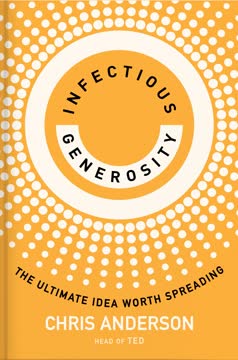重点摘要
1. 深度看见他人:人际关系的基础
“我们最需要的是关系,而我们最不擅长的也是关系。”
人际关系危机。 近几十年来,社会上出现了深刻的关系危机。抑郁症发病率飙升,自杀率增加,孤独感成为流行病。这种社会关系的破裂导致了广泛的情感痛苦和社会功能失调。
社交技能的需求。 这场危机的根本原因在于未能教授和培养基本的社交和道德技能——看见、理解和尊重他人完整人性的能力。我们过于注重职业准备,而忽视了如何建立有意义的联系。
被看见的力量。 人类幸福的核心是被他人真正看见、听见和理解的需求。当人们感到自己被忽视或误解时,会导致深刻的痛苦。学会深度看见他人并让他们感到被看见,是我们可以培养的最重要的技能之一。
2. 照亮的力量:投射公正和爱的目光
“每一种认识论都会变成一种伦理。我们的知识形态决定了我们的生活形态;认识者与被认识者的关系决定了生活自我与更大世界的关系。”
照亮者与贬低者。 有两种看待他人的方式:照亮者和贬低者。贬低者让人感到渺小和被忽视,把他们视为可以利用的对象。照亮者对他人有持久的好奇心,用关怀的光芒照亮他们,让人感到被尊重和理解。
照亮的要素:
- 温柔——看见每个人内在的尊严
- 接纳——对他人的经历保持开放
- 积极的好奇心——拥有探险者的心
- 爱意——通过爱和关怀来了解
- 慷慨——看到他人最好的一面
- 全面态度——抵制过度简化
道德形成。 学会照亮他人是一种道德发展的形式。它塑造了我们成为怎样的人以及我们如何与世界相处。通过培养照亮他人的能力,我们可以变得更智慧、更有同情心、更完整的人。
3. 陪伴:在人生旅途中与他人同行
“在这个意义上,陪伴是一种以他人为中心的生活方式。当你陪伴某人时,你处于一种放松的觉察状态——专注、敏感且不急不躁。”
超越对话。 陪伴不仅仅是与某人交谈。它涉及在他们的生活中与他们同在,关注他们的经历而不是试图控制或引导它。
陪伴的关键品质:
- 耐心——允许信任慢慢建立
- 玩心——通过共同的享受来连接
- 以他人为中心——关注他们的旅程,而不是你的
- 存在感——尤其在困难时刻出现
存在的力量。 仅仅为某人存在,而不试图修复或改变他们,可以极其有意义。它传达了你看见他们的内在价值,并愿意在他们的喜悦和挣扎中与他们同行。
4. 理解人们的观点和人生故事
“一个人是一个观点。你遇到的每个人都是一个创造性的艺术家,他们将生活事件转化为一种非常个人化的世界观。”
构建现实。 每个人都根据自己的经历、信仰和解释积极构建自己的现实感知。我们不是被动地接受一个客观的世界,而是创造我们主观的理解。
人生故事。 人们通过将生活编织成连贯的叙述来理解他们的生活。要真正了解某人,我们需要理解:
- 他们特有的语调
- 他们认为谁是他们故事的英雄
- 他们为自己的人生构建的情节
- 他们作为叙述者的可靠性
- 他们随着成长更新故事的能力
帮助塑造故事。 通过倾听人们的故事并提出好的问题,我们可以帮助他们获得对生活的新视角,并构建更有力量的叙述。这是一种支持成长和治愈的强大方式。
5. 掌握良好对话的艺术
“一场好的对话不是一群人互相发表一系列声明。一场好的对话是一种共同探索的行为。”
超越闲聊。 良好的对话超越表层的交流,创造真正的连接和洞察时刻。它们涉及相互探索,思想在彼此之间构建,双方都能学到新东西。
关键对话技巧:
- 积极倾听——全神贯注,而不是等待发言
- 提出好问题——引出故事和更深的反思
- 创造安全空间——允许脆弱和诚实
- 跟随情感线索——注意并探索情感
- 寻找共同点——通过共同经历连接
- 平衡说话和倾听——创造真正的对话
练习和心态。 成为一名熟练的对话者需要练习和意图。它涉及培养对他人的真正好奇心,并愿意在当下保持专注和投入。
6. 应对艰难对话和社会挑战
“每次对话都在两个层面上进行:官方对话和实际对话。”
表面之下。 在艰难的对话中,明确说出的内容往往不如潜在的情感动态重要。注意你如何让对方感到——安全或受威胁,受尊重或不受尊重。
关键策略:
- 理解权力动态——意识到社会/历史背景
- 关注共同目标——在分歧中找到共同点
- 练习同理心倾听——试图真正理解他们的观点
- 讨论“关于对话的对话”——讨论你们如何沟通
- 愿意脆弱——分享自己的挣扎和不确定性
搭建桥梁。 艰难的对话是增加跨越差异理解的机会。通过开放和技巧地接近它们,我们可以在原本分裂的地方创造连接。
7. 同理心:理解和支持他人的关键
“以这种方式被看见有助于减轻压力,提供一些距离感,带来希望。”
同理心作为技能。 同理心不仅是一种情感,而是一套可以发展的技能:
- 镜像——准确捕捉他人的情感
- 心理化——理解他们为什么会有这种感觉
- 关怀——知道如何有帮助地回应
情商。 发展“情感细腻度”——区分微妙情感状态的能力——可以更丰富地理解自己和他人。
支持成长。 有同理心的人为他人创造安全的空间来处理他们的经历和情感。这可以极其治愈和促进成长,让人们以新的方式看待自己和他们的处境。
8. 认识到痛苦如何塑造人们的生活
“所有的成长都是有代价的。它涉及放弃一种旧的生活方式。”
痛苦的变革力量。 尽管痛苦,但痛苦可以带来深刻的成长和转变。它常常迫使人们重新评估他们的信仰、优先事项和生活方式。
创伤后成长的关键方面:
- 发展对生活的新视角
- 发现意想不到的个人力量
- 加深与他人的关系和同情心
- 找到新的意义和目的
支持他人度过痛苦。 在陪伴某人度过困难时,重点是:
- 存在而不试图“修复”事情
- 为悲伤和困难情感留出空间
- 帮助他们从经历中构建新的意义
- 认可并肯定他们的韧性和成长
9. 个性和生活任务对身份的影响
“如果你想了解自己在这五大特质上的评分,可以上网找到许多问卷来帮助你。但当你走进一个聚会,或与某人在会议上坐下时,你可能不会递给他们一份性格测试。”
五大人格特质。 了解核心人格维度(开放性、尽责性、外向性、宜人性、神经质)可以洞察人们的思维、情感和行为方式。
生活任务。 人们在一生中经历不同的发展阶段和任务:
- 建立自主性和能力
- 形成社会身份和关系
- 巩固职业和目标
- 发展创造力和智慧
看见完整的人。 认识到先天的人格倾向和当前的生活任务,可以更细致和富有同情心地理解他人。
10. 文化遗产:祖先如何塑造我们的世界观
“要真正看见一个人,你必须把他们看作文化的继承者和文化的创造者。”
文化视角。 我们的文化背景深刻地影响我们看待和解释世界的方式。这包括:
- 代代相传的价值观和信仰
- 我们祖先的历史经历
- 风俗、传统和相处方式
既是继承也是创造。 虽然我们继承了文化框架,但我们也积极参与并转变我们的文化遗产。理解某人包括看见他们如何被文化塑造以及他们如何重塑文化。
跨越差异。 认识到文化遗产的力量,可以在跨文化鸿沟中带来更大的同理心和理解。它激发了对他人背景和经历的好奇心。
11. 通过深刻理解他人培养智慧
“智慧不是了解物理或地理。智慧是了解人。”
智慧作为关系技能。 真正的智慧不是拥有所有答案,而是知道如何深刻理解和支持他人。它包括:
- 为脆弱和成长创造安全空间
- 提出促进自我反思的深刻问题
- 提供扩展他人理解的视角
- 认识到每个人的复杂性和潜力
终身旅程。 发展智慧是一个不断学习更清晰和富有同情心地看待他人的过程。它需要谦逊、好奇心和不断成长的意愿。
智慧的影响。 智慧的人对周围的人有深远的积极影响。他们创造了让他人感到真正被看见、理解和有能力成为最好自己的环境。
最后更新日期:
FAQ
What's How to Know a Person about?
- Understanding Human Connection: The book delves into the art of deeply seeing others and being seen, highlighting the significance of human connection in a world filled with loneliness.
- Personal Growth Journey: David Brooks shares his transformation from emotional detachment to empathy, illustrating how this change can improve relationships.
- Social Skills Importance: It emphasizes the necessity of social skills for building meaningful relationships, often overlooked in modern education and society.
Why should I read How to Know a Person?
- Addressing Loneliness Epidemic: The book tackles the growing issue of loneliness, offering insights on fostering deeper connections.
- Practical Advice: It provides actionable methods to enhance your ability to understand others, leading to more fulfilling relationships.
- Personal and Societal Relevance: Brooks connects personal growth to societal issues, making it relevant for improving interpersonal skills and community contribution.
What are the key takeaways of How to Know a Person?
- Illuminators vs. Diminishers: The book distinguishes between those who uplift others and those who make others feel unseen, encouraging reflection on personal interactions.
- Importance of Empathy: Empathy is presented as a skill that can be developed, crucial for understanding others and building strong relationships.
- Social Skills Training: Advocates for teaching social skills in schools, as they are vital for personal and societal well-being.
What are the best quotes from How to Know a Person and what do they mean?
- “Being open-hearted is a prerequisite...”: Highlights the necessity of vulnerability and emotional openness for genuine connections.
- “Human beings need recognition...”: Emphasizes the fundamental human need for acknowledgment, equating social connection to physical sustenance.
- “To really know another person...”: Stresses the reciprocal nature of relationships, built on mutual recognition and shared experiences.
What is the concept of "Illuminators" in How to Know a Person?
- Definition of Illuminators: Individuals who are curious about others and seek to understand their experiences and emotions.
- Impact on Relationships: They help others feel valued and understood, fostering deeper connections and enhancing interactions.
- Contrast with Diminishers: Illuminators uplift, while Diminishers fail to recognize others' worth, leading to superficial relationships.
How does David Brooks define empathy in How to Know a Person?
- Empathy as a Skill: Defined as a set of social and emotional skills that can be developed over time.
- Components of Empathy: Includes mirroring emotions, mentalizing (understanding perspectives), and caring for others' well-being.
- Importance of Empathy: Essential for building meaningful relationships and understanding human complexities.
What methods does Brooks suggest for improving social skills in How to Know a Person?
- Practice Active Listening: Be fully present in conversations, treating attention as an on/off switch to foster genuine connections.
- Ask Open-Ended Questions: Encourage deeper exploration of thoughts and feelings, rather than limiting responses.
- Engage in Shared Activities: Spending time together in casual settings can build rapport and trust, facilitating deeper conversations.
What is the "Epidemic of Blindness" mentioned in How to Know a Person?
- Crisis of Connection: Described as a societal crisis where individuals fail to see and understand one another, increasing loneliness.
- Impact on Mental Health: Contributes to rising rates of depression and anxiety, as people feel unseen and unheard.
- Call to Action: Encourages cultivating skills to see others deeply, combating this epidemic and improving societal well-being.
How does Brooks suggest we accompany friends in despair in How to Know a Person?
- Be Present: Emphasizes the importance of simply being there, offering comfort without needing to provide solutions.
- Acknowledge Their Pain: Recognize and validate their feelings, allowing expression without judgment.
- Encourage Open Communication: Foster an environment where friends feel safe to share struggles, reducing isolation.
What role does childhood experience play in shaping a person, according to How to Know a Person?
- Foundation of Identity: Childhood experiences significantly shape identity, emotional responses, and relationships.
- Defensive Architectures: Individuals develop defenses based on early experiences, affecting adult connections.
- Understanding Others: To truly know someone, understanding their background and formative experiences is essential.
How does the book address the impact of suffering on personal growth?
- Suffering as a Catalyst: Posits that suffering can lead to significant personal growth and transformation.
- Sharing Grief: Emphasizes the importance of sharing grief, fostering deeper connections and understanding.
- Reinterpreting Experiences: Encourages reinterpreting past experiences as part of a larger narrative, finding meaning and resilience.
How can I apply the concepts from How to Know a Person in my daily life?
- Practice Active Engagement: Be more present in conversations, actively listening and showing genuine interest in others.
- Cultivate Empathy: Develop empathy skills by practicing mirroring emotions, mentalizing, and caring for others.
- Foster Deeper Connections: Use open-ended questions and shared activities to build rapport, creating a foundation for meaningful interactions.
评论
《如何了解一个人》因其对人际关系和人类连接的洞察力而获得了大多数正面评价。读者们欣赏布鲁克斯引人入胜的写作风格、个人轶事以及关于深化对话和理解他人的实用建议。许多人认为这本书发人深省,并且与当今两极分化的社会息息相关。然而,一些批评者认为它过于简化复杂话题,并过度依赖轶事。尽管意见不一,大多数读者仍然认为这本书在探索同理心和有意义的人际互动方面具有价值。
Similar Books


















